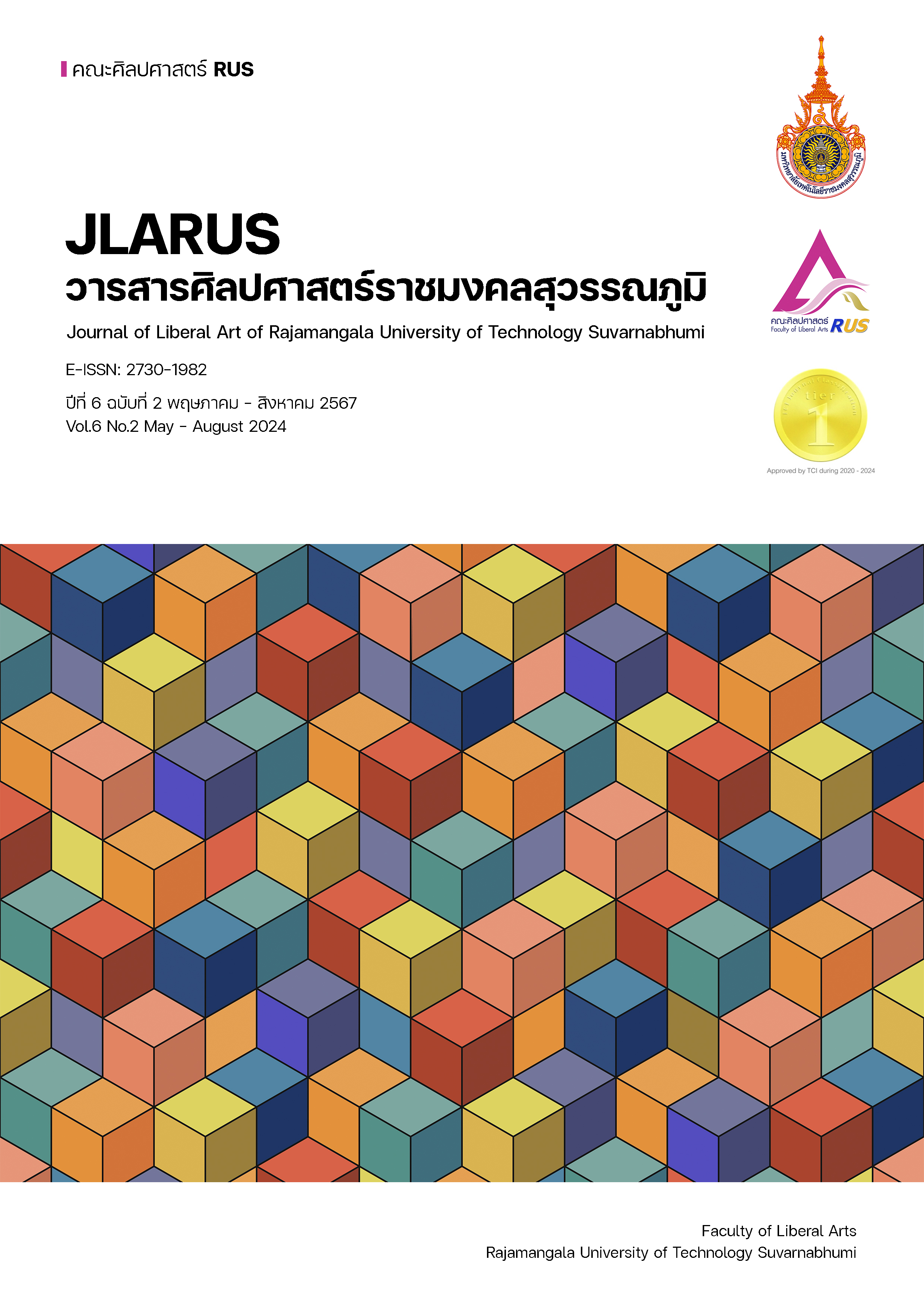The THE PERSONNEL PROACTIVE RECRUITMENT
Main Article Content
Abstract
The purposes of this research were 1) to identify the factors of the proactive recruitment according to the viewpoint of educational personnel, and 2) to verify the factors of the proactive recruitment by the experts. The samples included directors of the educational service area office, directors of personnel management group and school, directors of primary educational service area office, and secondary educational service area office. They were selected by determined based on group matching in the ratio 1:1. There were 300 respondents. The instruments for collecting data were the semi-structured interview, the opinionnaire and the questionnaire to verify the research findings for analysis data by descriptive statistics and content analysis. The statistics used to analyze the data were frequency, percentage, arithmetic mean, standard deviation, exploratory factor analysis, and content analysis. The research design was descriptive research. There was the research plan of study in the form of a single sample group in order to examine the situation without experimentation.
The research results were found as follows: 1) The personnel proactive recruitment consisted of 3 factors 1) preparation for the personnel proactive recruitment consisted of 3 latent variables including 1.1) efficiency development of the personnel proactive recruitment 1.2) guidelines of the personnel proactive recruitment, and 1.3) techniques of the personnel proactive recruitment. 2) Operation of the personnel proactive recruitment consisted of 3 latent variables including 2.1) materials of the personnel proactive recruitment, 2.2) activities of the personnel proactive recruitment 2.3) channel of the personnel proactive recruitment, and 3) Criteria of the personnel proactive recruitment. The total variance was explained by 3 components is 68.618 percentage. Moreover, 2) The factors of the personnel proactive recruitment by the experts in the overall were verified to meet with accuracy standards, propriety standards, feasibility standards, and utility standards.
Article Details

This work is licensed under a Creative Commons Attribution-NonCommercial-NoDerivatives 4.0 International License.
References
คณะกรรมการอิสระเพื่อการปฏิรูปการศึกษา. (2562). แผนการปฏิรูปประเทศด้านการศึกษา.กรุงเทพมหานคร: สำนักงานเลขาธิการสภาการศึกษา.
ปารดา นาครักธรรม. (2564). แนวทางการสรรหาบุคลากรเชิงรุกในยุค New Normal: กรณีศึกษากระทรวงการต่างประเทศ. บทความวิจัยโครงการรัฐประศาสนศาสตรมหาบัณฑิต. กรุงเทพมหานคร: มหาวิทยาลัยรามคำแหง. สืบค้น 25 กุมภาพันธ์ 2566. จาก http://www3.ru.ac.th/mpa-abstract/files/2564_1661151592_6314832031.pdf.
พวงผกา แสงเงิน. (2561). ปัจจัยการคัดสรรผู้บริหารสถานศึกษาขนาดใหญ่พิเศษของกรุงเทพมหานคร(ดุษฎีนิพนธ์ปรัชญาดุษฎีบัณฑิต). กรุงเทพมหานคร: มหาวิทยาลัยศิลปากร.
รัฐธรรมนูญแห่งราชอาณาจักรไทย. (2560). ราชกิจจานุเบกษา. เล่ม 134 ตอนที่ 40 ก. 6 เมษายน 2560.
วีรชัย ดีงาม. (2563). การสรรหาบุคลากรเชิงรุกสายวิชาชีพแพทย์ของสำนักอนามัย. ใน เอกสารการฝึกอบรมหลักสูตรนักบริหารมหานครระดับต้น รุ่นที่ 36. กรุงเทพมหานคร: สถาบันพัฒนาข้าราชการ.
สมพิศ ทองปาน. (2559). HR เชิงรุกในยุคของการเปลี่ยนแปลง. วารสารบัณฑิตศึกษา มหาวิทยาลัย ราชภัฏวไลยอลงกรณ์ ในพระบรมราชูปถัมภ์, 10(3), 245 - 258.
สำนักงานคณะกรรมการข้าราชการพลเรือน. (2558). การดำเนินการสรรหาเชิงรุก Proactive Recruitment Strategy. กรุงเทพมหานคร: ศูนย์สรรหาและเลือกสรร.
สำนักงานเลขาธิการสภาผู้แทนราษฎร. (2563). การสรรหาเชิงรุกของส่วนราชการสังกัดรัฐสภา. การประชาสัมพันธ์และภาพลักษณ์องค์กร. กรุงเทพมหานคร: สำนักงานเลขาธิการสภาพผู้แทนราษฏร.
สุชานุช พันธนียะ และพฤฒ ยวนแหล. (2564). นวัตกรรมการสรรหาคนที่ “ใช่”: กระแสโลกและความท้าทายของราชการไทย. วารสารการบริหารและการจัดการนวัตกรรม มหาวิทยาลัยเทคโนโลยีราชมงคลรัตนโกสินทร์, 9(1), 22-34.
Best, J. W., and Kahn, J. V. (2016). Research in Education. (10th ed.). Massachusetts: Pearson Education Inc.
Beyl, C. A., Adams, A. F., & Smith, E. G. (2016). A proactive model for recruiting students into agriculture disciplines. NACTA Journal, 60(1), 51-59.
Chopra, D. (2022). 5 Proactive Recruitment Strategies to Hire the Best Talent. Retrieved April 13, 2022. From https://www.adaface.com/blog/proactive-recruitment/.
Donnelly, N. S. (2014). Strengthening the employer brand image -Experimentation of proactive recruitment related activities (Master in Marketing Buskerud). Vestfold, Norway: Vestfold University College.
Kristanto, D. G. (2022). Implementation of Proactive Recruitment Program for Indonesia National Police (POLRI) Candidates at Regional Police of the Riau Islands. Faculty of Administration Sciences, Universitas Indonesia, 4(4), 616-625.
Kurniawan, A. (2023). Implementation of affirmative action policy in the proactive recruitment program for the border area in the Implementation of the selection of police non-commissioned officers at the Riau Islands Regional Police in 2020. International Journal of Economics, Business and Accounting Research. 7(1). 1-8.
Nadherny, C. (2017) The Proactive Executive A C-suite recruiter’s 5-step system for achieving greater career success. South Carolina: Bublish Inc. 1 - 142.
Prakoso, Y., and Juwono, V. (2022). Analysis of Implementation Proactive Recruitment in NCO POLRI Recruitment and Selection at Regional Police of the Bangka Belitung Islands. Budapest International Research and Critics Institute Journal, 5(2), 11735–11741.
Samad, F. (2023). Evaluation of the Proactive Recruitment Program Innovation of the Indonesian National Police. KnE Social Sciences, 336-347.
Siker, P. (2007). Proactive Recruiting In A War For Talent Economy. Virginia: Advanced Recruiting Trends.


